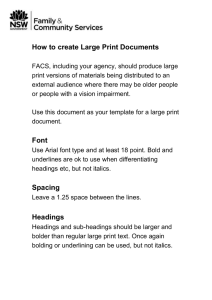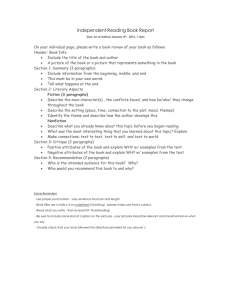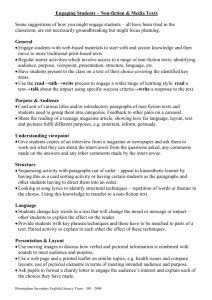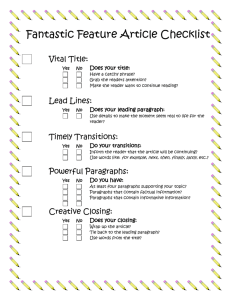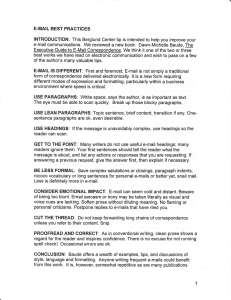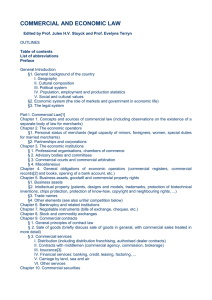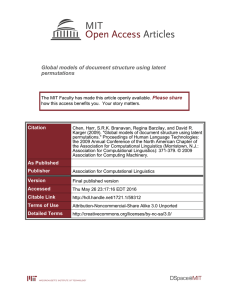'Reports Language Toolkit'.
advertisement
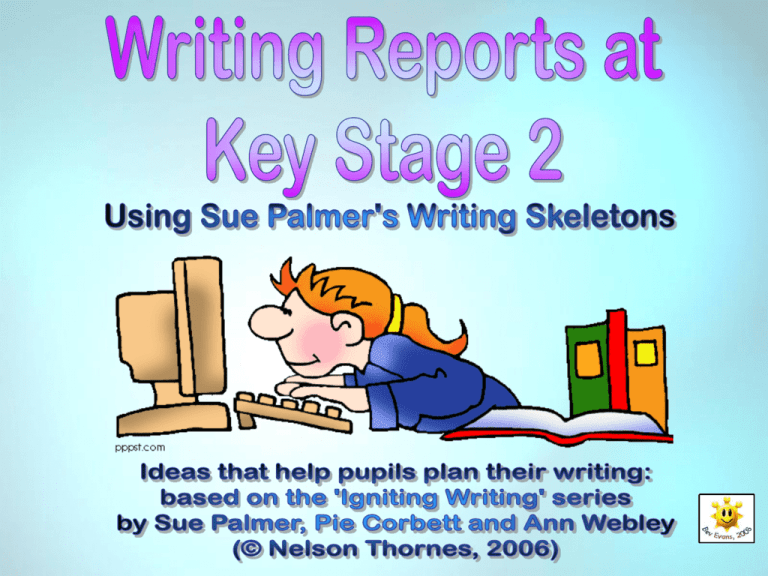
All non-fiction text types cover have the same five key issues to look at. These are: • • • • • Audience Purpose Examples Typical structure Typical language features A report gives factual information about a range of subjects. It is written for someone who wants to find these things out. The report writing skeleton looks like this. Baby shark senses Can’t blink life cycle Forked tail White belly Learns to hunt Full grown at 12 appearance Rough skin Great White Shark – 1 of 400 species habitat Wide jaws dangers food It gives factual information which can be in nonchronological order There are lots of different types of report. • • • • • • • An information leaflet A newspaper or magazine article A letter A non-fiction book An encyclopaedia entry A catalogue A school website Let’s look at the five key areas of a report. Audience Purpose Examples Someone who wants to know about something To present information that is easy to find and understand Dictionary, reference book, text book, encyclopaedia Typical Structure Typical language features Paragraphs that are not in chronological order and categories with headings/sub headings Formal and impersonal, technical vocabulary, present tense, generalisation, detail where necessary There are two ‘tool kits’ we need to write reports. The ‘Organisation Toolkit’. The ‘Reports Language Toolkit’. • • • • Remember to… Write a title to say what you are writing about Write an introduction that defines the subject or make a statement that interests or intrigues the reader so they want to read on. Organise work in paragraphs starting with a topic sentence. You could also use a sub-heading to divide up your work. Write paragraphs in a sensible order e.g. when talking about and animal write about it’s appearance first. • Draw diagrams, charts or fact boxes. These give clear information • Write a conclusion to draw writing to an end and add a glossary if necessary. Remember to… • Write in the present tense, except for historical reports • Write in the third person (he, she, it, they) • Write in a formal style, although you may want to address the reader directly at the end • Use relevant technical language (tentacles, skull) • Use accurate descriptions, interesting detail and several facts and examples • Use ‘weasel words’ to cover exceptions (usually, maybe, generally) Let’s look at the report writing skeleton once more. detail facts detail facts detail detail detail detail facts Subject facts detail detail facts facts Now try to use this in your writing. Presentation by Bev Evans, 2008, www.communication4all.co.uk Clip art ©Philip Martin, available from http://www.phillipmartin.info/clipart/homepage.htm

